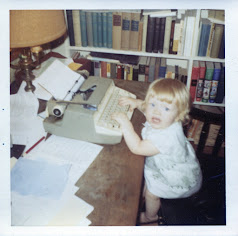I've had a lot of fun with this project; trying to verify the information on this headstone from Donald's family. I have relearned some old lessons, like taking the time to understand a new-to-me record set before diving in, I've learned about new records and I have a nice list of things to learn and investigate. And additional documentation is needed for a lot of the information on the stone, so the project isn't really over, just my blog series.
I've loved looking through New York City census records for this time period; these time capsules are a great tool for imagining life in the past. Like the occupations captured on just one page; an embroidery designer and operator, a janitor, two coopers, two vaudeville actresses and a department store detective and a handful of servants. I think you could write a novel using just one page as a starting point.
I want to learn more about Winifred Coughlin; about her life in Ireland if at all possible and her early years in New York City, before she married William Barry. There were some fantastic lectures at the British Isles Family History Society of Greater Ottawa conference and I'm hopeful that they can help me add to our knowledge of the Coughlin family in County Galway.
I am also hopeful that learning more about William Barry will help us to discover his home parish in Ireland and open up another branch of Donald's family. I'll be looking for any documents related to his immigration and naturalization as well as records of the Emigrant Savings Bank, which I believe are on Ancestry. The New York Public Library also seems to have some images, but I'll have to look into that further. Investigating William Barry's Civil War service is sure to be another great learning experience. I plan to start with a webinar at Legacy Webinars and go from there.
 |
In my ongoing research into Donald's family, I also want to learn more about Lutheran church records. Not only was Annie Miller Barry born into the Lutheran church, but I suspect that one of Donald's great-grandmothers, Emma Fredericks, and her ancestors were as well. For this I will need help from resources like the FamilySearch Wiki and a great book that I bought last year; How To Find Your Family in U.S. Church Records: A Genealogist's Guide by Sunny Jane Morton and Harold A. Henderson, CG.
Something I wrote about during this series was the National Library of Ireland website where you can find images from Irish Catholic parish registers. There is no index on their website and you won't get any hints as you may on Find My Past, but if you know your ancestor's home parish, you may be able to find them for free without the index or hints.
Facebook groups are a great way to access the "hive mind" when you are stuck on something. Back in 2013, Katherine R. Willson started a list of Facebook groups for genealogy. Her last update to the list was in January of this year, which you can find here. Since then, Cyndi Ingle of Cyndi's List has taken over and you can find that on her website, here, although as of the writing of this post it is still under construction.
Chronicling America is a free digitized newspaper resource from the National Endowment for the Humanities and the Library of Congress. This is where I found the news article about William Barry's mourner who collapsed at the church before his funeral.
One last resource that I thought I would use more, especially for analyzing records in search of Annie Barry's year of birth, was Clooz. One of the drawbacks of this program is the data entry. It did get a bit ponderous and I admit that I lost patience for it, although that may have something to do with the fact that I desperately need new bifocals. Since concluding the series, I have gone back and entered the data for all of the records that I have for Annie, but I was not able to produce a report that would have been any help with this problem. I'll keep working with the software, though, and keep you posted when I've had a chance to watch more of their videos and use it more.
Of course, the most important thing to remember from all of this is that just because information has been "carved in stone," or even recorded in a parish register, doesn't make it correct!






Really enjoyed this series and especially your wrapup of resources. The Tenement Museum is worth a visit--gives visitors insight into what daily life was like for those who lived in those Lower East Side tenements. I took 2 different tours and learned a lot from both. Have fun.
ReplyDeleteThanks, Marian. I haven't been into Manhattan in about two years now, I'm really chomping at the bit. As long as Donald is fully recovered from his neck surgery by then, we will be there as soon as the weather turns warm again.
Delete